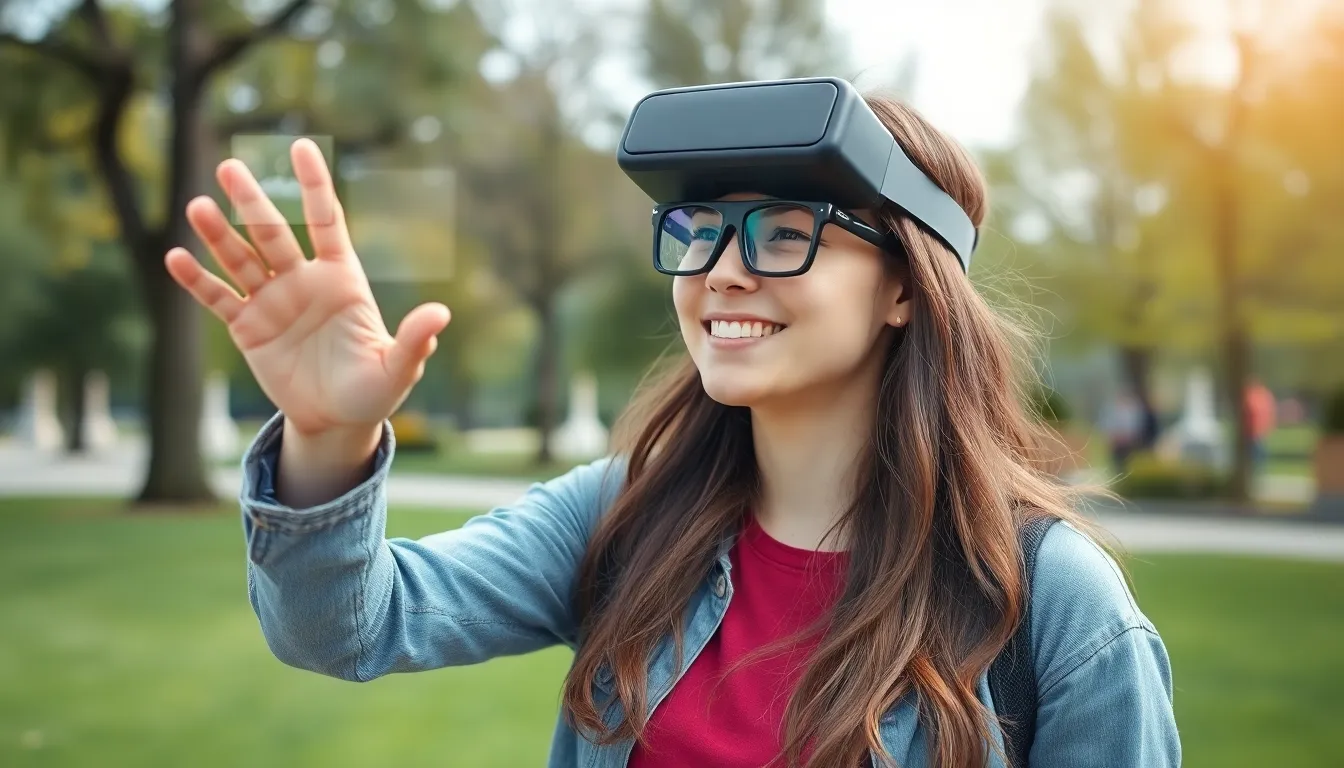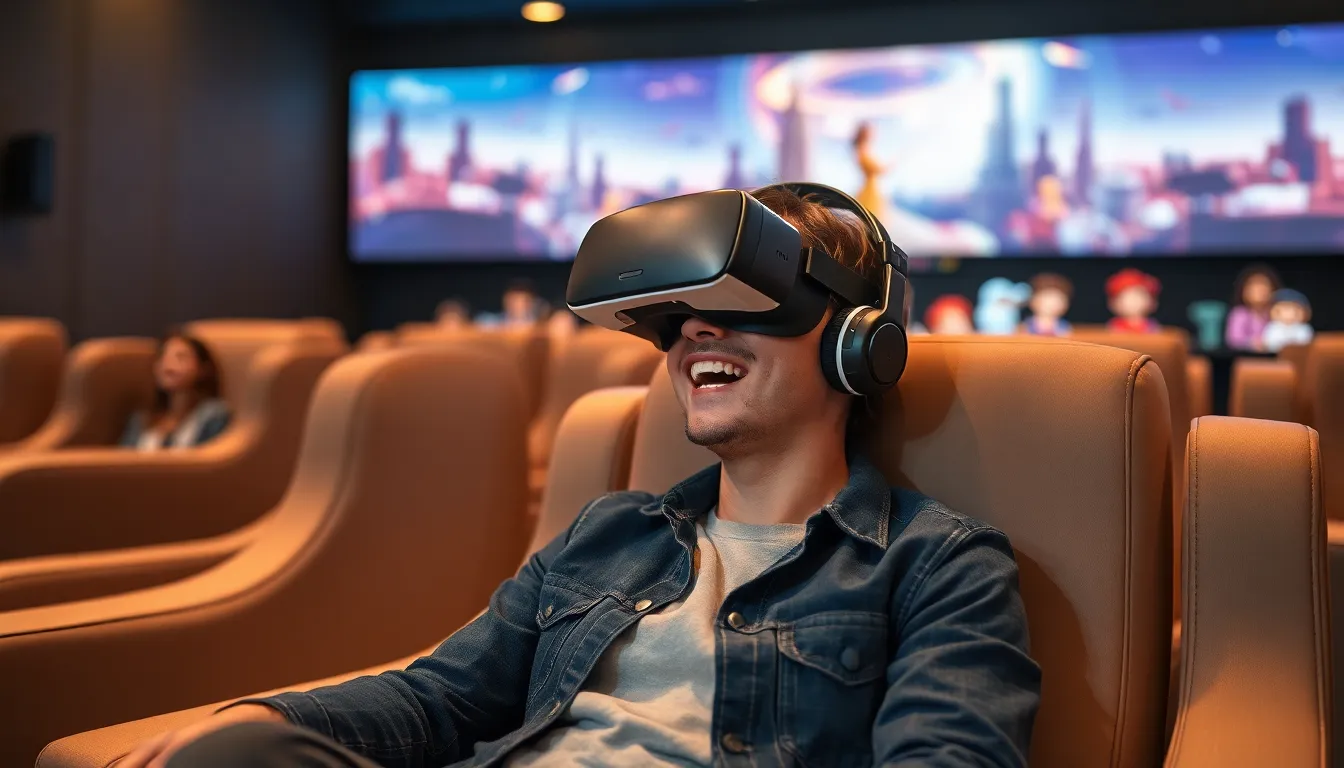Augmented Reality (AR) isn’t just a tech buzzword; it’s a game-changer that’s reshaping how people interact with the world. Imagine walking through your living room and suddenly seeing a dinosaur lounging on your couch, or your favorite coffee shop popping up on your phone’s screen as you stroll by. It’s not magic; it’s AR, and it’s here to stay.
Table of Contents
ToggleUnderstanding AR User Experience
Augmented Reality (AR) user experience centers around how individuals interact with digital content integrated into their physical environment. This interaction goes beyond mere visualization, ushering in a new way of perceiving and engaging with information.
Definition of AR User Experience
AR user experience encompasses the blend of digital and physical spaces, creating immersive encounters. Immersion occurs when virtual elements seamlessly integrate with real-world surroundings, enhancing user engagement. Users interact with these digital elements through devices like smartphones and AR glasses, enabling manipulation and exploration. Important aspects include usability, accessibility, and situational context, all contributing to the overall satisfaction of the user. This definition sets the foundation for understanding the practical applications of AR in everyday scenarios.
Importance of AR in Daily Life
AR plays a vital role in enhancing daily life by providing enriched experiences. It transforms mundane tasks into interactive adventures, making information more accessible and engaging. Retail environments, for instance, utilize AR to allow customers to visualize products in their home settings before purchase decisions. Navigation apps enhance outdoor experiences by overlaying directions onto real landscapes. Educational institutions also leverage AR for interactive learning, blending curriculum with captivating virtual scenarios. These examples highlight how AR integrates into various aspects of life, improving user experiences across different fields.
Key Components of AR User Experience

Understanding the key components of Augmented Reality (AR) user experience is essential for maximizing interaction quality. These components influence efficiency and satisfaction levels among users.
User Interface Design
User interface design plays a crucial role in AR. A well-crafted interface ensures that digital elements do not overwhelm the real-world environment. Clarity remains vital, as users require intuitive navigation. Visual consistency across virtual objects enhances recognition and interaction. Designers often utilize familiar gestures for ease of use, promoting user confidence. Feedback mechanisms inform users of successful interactions, further improving experience. Overall, effective user interface design increases engagement levels and aids in communication between the user and the augmented environment.
Interaction Models
Interaction models shape how users engage with AR applications. Touch-based interactions allow users to manipulate virtual elements directly. Voice commands provide an alternative for hands-free control, broadening accessibility options. Spatial awareness enables users to navigate their surroundings while interacting with digital content. Gesture recognition, incorporating body movements, adds a layer of immersion. Each interaction model caters to unique user needs and preferences, encouraging widespread adoption. Emphasizing diverse interaction methods enhances the overall functionality and enjoyment of AR experiences.
Challenges in AR User Experience
Augmented Reality (AR) faces several challenges that impact user experience significantly. Addressing these obstacles is essential for enhancing the effectiveness of AR applications.
Technical Limitations
Technical limitations can hinder AR’s potential. Devices may struggle to process high-quality graphics in real-time, leading to latency issues. Inadequate battery life affects prolonged use, making sustained engagement difficult. Network connectivity also plays a crucial role; poor connections can disrupt experiences, reducing immersion. Additionally, inaccuracies in object recognition can frustrate users, as misaligned overlays detract from the experience. These technical challenges require ongoing innovation and support to elevate AR capabilities.
User Adaptability
User adaptability significantly influences AR experiences. People must understand how to interact with virtual elements placed in their environment. Some users may struggle to adjust to new interfaces and interaction models, which can lead to frustration. Familiarization with touch-based controls, voice commands, and gesture recognition varies by demographic, affecting engagement levels. As users become more accustomed to AR, their interactions improve, leading to increased satisfaction. Efforts to enhance usability through comprehensive tutorials and adaptive interfaces can help ease these transitions.
Enhancing AR User Experience
AR user experience thrives on effective design and forward-thinking trends. By focusing on user needs, developers can create engaging interactions.
Best Practices for Design
Prioritize usability to ensure intuitive navigation during AR experiences. Integrating user feedback during the design process leads to better functionality. Keep layouts uncluttered and maintain a balance between virtual and real-world elements. Adopt consistent visual cues and maintain color schemes. Provide clear instructions to facilitate user interaction with digital content. Emphasizing these principles enhances satisfaction and engagement.
Future Trends in AR User Experience
Innovations in AR technology shape future user experiences. Improved device capabilities offer higher fidelity visuals and more responsive interactions. Advancements in artificial intelligence enable personalized experiences tailored to individual preferences. Integration of social elements encourages collaborative interactions among users. Expansion into various sectors, including healthcare and gaming, will transform how users engage with content. Monitoring these trends will facilitate continued development and adaptation in AR applications.
The evolution of AR user experience is reshaping how individuals engage with their surroundings. By merging digital content with the physical world, AR creates unique interactions that enrich daily life. As technology continues to advance, the potential for more immersive and personalized experiences grows.
Addressing challenges like usability and technical limitations is essential for maximizing user satisfaction. By focusing on intuitive design and incorporating user feedback, developers can enhance the overall experience. The future of AR promises exciting innovations that will further transform user engagement across various sectors.
Staying informed about emerging trends will be crucial for anyone looking to leverage the power of AR in their applications. Embracing this technology will undoubtedly lead to a more interactive and enriched way of living.



